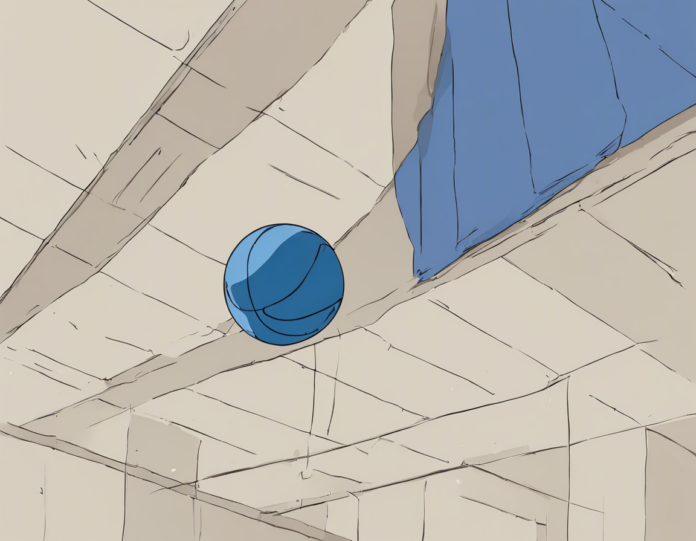Physics is a fundamental branch of science that governs the behavior of matter and energy in the universe. One of the fascinating topics within physics is projectile motion, which describes the motion of objects that are thrown or projected into the air. In this article, we will delve into the specifics of projectile motion, focusing on the scenario of a ball thrown upward. We will explore the key concepts, equations, and principles that govern this type of motion.
Understanding Projectile Motion:
Projectile motion is a type of motion experienced by an object that is projected into the air and is subject only to the force of gravity and air resistance (if applicable). When a ball is thrown upward, it follows a curved path known as a projectile trajectory. The motion can be broken down into two independent components: horizontal motion and vertical motion.
Components of Projectile Motion:
- Horizontal Motion: The horizontal component of the motion remains constant throughout the trajectory since there are no horizontal forces acting on the object.
- Vertical Motion: The vertical component is influenced by gravity, causing the object to accelerate downwards at a rate of 9.81 m/s^2 on Earth.
Equations of Motion:
To analyze the motion of a ball thrown upward, we can use the following equations of motion:
- Vertical Motion Equation: The equation describing the vertical position of the ball as a function of time is given by:
[ y(t) = y_0 + v_{0y}t – \frac{1}{2}gt^2 ]
Where:
– ( y(t) ) is the vertical position at time t
– ( y_0 ) is the initial vertical position
– ( v_{0y} ) is the initial vertical velocity
– ( g ) is the acceleration due to gravity
– ( t ) is the time elapsed
- Vertical Velocity Equation: The velocity of the ball at any given time during its upward motion can be calculated using the equation:
[ v_{y}(t) = v_{0y} – gt ]
Where:
– ( v_{y}(t) ) is the vertical velocity at time t
– ( v_{0y} ) is the initial vertical velocity
– ( g ) is the acceleration due to gravity
– ( t ) is the time elapsed
- Vertical Height Equation: The maximum height reached by the ball can be determined by setting the vertical velocity to zero. This occurs when:
[ v_{y} = 0 ]
[ v_{0y} – gt = 0 ]
[ t = \frac{v_{0y}}{g} ]
Substituting this time back into the vertical motion equation will give the maximum height achieved.
Key Points about Projectile Motion:
- The trajectory of the ball is a parabolic curve due to the independent horizontal and vertical motions.
- The time of flight is twice the time taken to reach the highest point in its trajectory.
- The range of the projectile is the horizontal distance it covers before hitting the ground.
- The maximum height is attained when the vertical velocity becomes zero.
Factors Affecting Projectile Motion:
Several factors can influence the projectile motion of a ball thrown upward:
- Initial Velocity: The greater the initial velocity of the ball, the higher it will go and the farther it will travel horizontally.
- Launch Angle: The angle at which the ball is thrown affects the range and height it will reach. 45 degrees is the optimal angle for maximum range.
- Air Resistance: Air resistance can affect the trajectory of the ball, especially for objects with larger surface areas.
- Gravity: The strength of gravity on a particular planet or celestial body will influence the trajectory of the projectile.
Frequently Asked Questions (FAQs):
-
What is projectile motion?
Projectile motion is the motion of an object that is thrown or projected into the air and moves along a curved path under the influence of gravity. -
How is projectile motion different from regular motion?
Projectile motion involves both horizontal and vertical components, while regular motion typically occurs in a straight line. -
What are the key components of projectile motion?
The key components are the initial velocity, launch angle, time of flight, range, maximum height, and trajectory of the object. -
How does air resistance affect projectile motion?
Air resistance can alter the trajectory and speed of a projectile, especially for objects with larger surface areas. -
What is the optimal launch angle for maximum range in projectile motion?
The optimal launch angle for maximum range in projectile motion is approximately 45 degrees. -
How does gravity influence projectile motion?
Gravity causes the vertical acceleration of the object, pulling it downwards and affecting both the height and speed of the projectile. -
What happens at the highest point of a projectile’s trajectory?
At the highest point, the vertical velocity of the object becomes zero, while the horizontal velocity remains constant. -
Can a projectile motion scenario involve both upward and downward motion?
Yes, a projectile can be launched upward, reach a maximum height, and then fall back down due to gravity.
In conclusion, understanding the principles of projectile motion is essential for analyzing the motion of objects in the air. By considering the equations, key components, and factors affecting this type of motion, we can gain insights into how objects move and behave in the presence of gravity and other influences. Projectile motion is not only a fascinating topic in physics but also has practical applications in fields such as sports, engineering, and astronomy.

